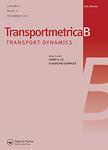版权所有:内蒙古大学图书馆 技术提供:维普资讯• 智图
内蒙古自治区呼和浩特市赛罕区大学西街235号 邮编: 010021

作者机构:Tongji Univ Key Lab Rd & Traff Engn Minist Educ 4800 Caoan Rd Shanghai 201804 Peoples R China Univ Massachusetts Civil & Environm Engn Amherst MA 01003 USA
出 版 物:《TRANSPORTMETRICA B-TRANSPORT DYNAMICS》 (运输研究B:传输动力学)
年 卷 期:2021年第9卷第1期
页 面:198-218页
核心收录:
学科分类:08[工学] 0823[工学-交通运输工程]
基 金:National Key Research and Development Program of China [2018YFE0102800]
主 题:Car-following model human factors task capability interface model fuzzy logic algorithm
摘 要:Incorporation of Human Factors (HF) into the mathematical car-following (CF) models has always been the research hotspot. Ignorance of such inclusion would inevitably hinder us from acquiring a comprehensive understanding of traffic flow phenomena. This paper proposed a novel CF model in order to bridge three existing research gaps: the demand for more inclusion of HF into the Longitudinal Control Model (LCM);the requirement for a more desirable underlying CF model for the Task Capability Interface (TCI) model;the ignorance of the fuzziness of human brains when modeling Task Difficulty (TD). Specifically, in order to imitate driver s natural or subjective uncertainty and ambiguity of his TD, the fuzzy logic approach is introduced, and the TD is then incorporated into the LCM. Thereafter, both numerical simulation and field-data validation have been performed. Results indicate that our proposed model is more capable of accommodating HF and exhibits better performance than its predecessor.